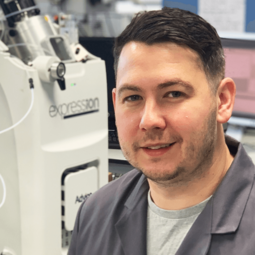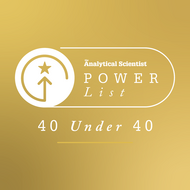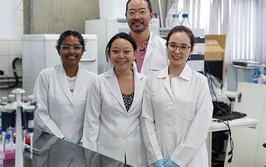Liam Heaney

Senior Lecturer, Bioanalytical Science, School of Sport, Exercise & Health Sciences, Loughborough University, UK
Fears? My biggest fears relate to the funding landscape. I have noticed an interest in moving the funding approach for mass spectrometry away from the individual lab setting and towards an approach where there are “mega labs” and national/regional facilities. Though these approaches might make sense to a funding agency (you can fill a lab with the best equipment and best scientists), the reality is that these setups will massively detract from the next generation of scientists’ capacity to learn. I hope it does not reduce the capacity for smaller labs to bid for perhaps more routine instrumentation. If students/ECRs are not getting lots of hands-on experience, they will be leaving academia with a lack of analytical skills required to excel in industry. The ability to work in the lab, whether they be large and well-funded or small/niche, on a mass spectrometer on a daily basis, making errors, learning from mistakes, developing protocols, running instruments, and visualizing/processing data are all experiences that develop the most confident and competent analytical scientists. These “mega labs” will likely become too much of a service; students will visit for a few days to run their analysis and will not get the same level of learning. In reality, the majority of access will remain to those with the most well-funded projects, potentially creating an even wider divide in academic opportunities.
Advice? This is simple. Surround yourself with good people, people who have similar skill sets to compliment your ideas but also those who are completely different to allow you to develop work in other areas. An example of this from my experience is looking to develop mass spectrometry in sports and exercise science. I have excellent colleagues in Chemistry to discuss technical aspects with, and equally excellent colleagues in sport who continually offer innovative ideas to work with our equipment. This cross-field scenario has also allowed me the opportunity to start building research in sports anti-doping which is an area I have a lot of interest in. Therefore, I would advise everybody to collaborate collegiately with people as you never know when that relationship could be important. I would not be where I am today without having developed lasting positive relationships with academics, the mass spectrometry industry, the nutrition industry, national organizations, amongst others.
Mission? My personal goal is to continue in my attempts to expose analytical science to a wider audience. I am aware of how little content for laboratory analysis is included across sports science courses, especially when considering the total reliance on analytical science for anti-doping monitoring. This is a major part of sport, and I really believe our sports science students should be learning about this to complement their other studies. From a research perspective, I am excited to continue building a reputation within the anti-doping sector both for myself and for our School/University. Though Loughborough University is world-renowned for its involvement in sport, anti-doping science has only played a small part in this success and therefore is a key area with potential to further grow the institutional reputation.
Dream dinner party guests? The 2006 St Helens Rugby League treble winning squad.


















